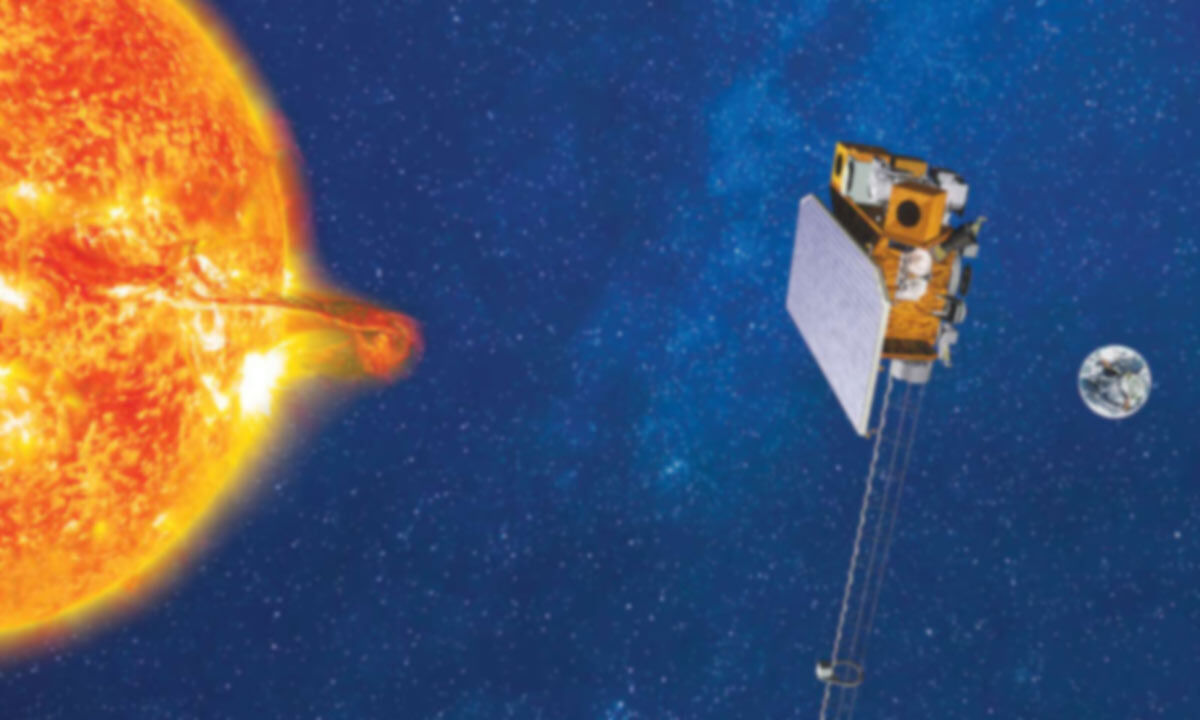How Will NASA's Two New Satellites Revolutionize Space Weather Tracking?

Understanding NASA's New Mission to Study Magnetic Storms
NASA has embarked on a groundbreaking mission that aims to enhance our understanding of magnetic storms around Earth. These storms, also known as geomagnetic storms, can have profound effects on our atmosphere and the technology we rely on, such as satellites. This article explores the significance of this mission, the technology involved, and the potential implications for both science and everyday life.
The Science Behind Magnetic Storms
Magnetic storms are caused by disturbances in the magnetosphere, which is the region of space surrounding Earth influenced by its magnetic field. These disturbances are primarily driven by solar activity, particularly solar flares and coronal mass ejections (CMEs). When a CME occurs, it releases a massive burst of solar wind and magnetic fields into space. If this solar material reaches Earth, it can interact with our planet's magnetic field, leading to various phenomena.
The impact of magnetic storms is not just confined to outer space. When these storms occur, they can cause a variety of effects on Earth, including:
- Disruption of satellite communications
- Increased radiation exposure for astronauts
- Damage to power grids
- Stunning auroras at polar regions
NASA's Tandem Reconnection and Cusp Electrodynamics Reconnaissance Satellites (TRACERS)
The mission, known as Tandem Reconnection and Cusp Electrodynamics Reconnaissance Satellites (TRACERS), is set to launch in the near future. TRACERS aims to investigate the complex interactions between solar wind and Earth's magnetosphere. The mission will employ two identical satellites that will work in tandem, providing a unique perspective on the dynamics of magnetic reconnection.
Magnetic reconnection is a process where magnetic field lines from the sun and Earth connect, releasing energy that can accelerate particles and lead to the phenomena associated with magnetic storms. By observing this process, TRACERS will provide valuable insights into how solar wind affects the magnetosphere and, consequently, our planet.
The Technology Behind TRACERS
NASA's TRACERS mission utilizes cutting-edge technology that enables the satellites to gather precise data. Each satellite is equipped with advanced instruments designed to measure electric and magnetic fields, as well as the properties of charged particles in space. Key components include:
- Magnetometers: To measure magnetic fields in real-time.
- Electric field sensors: To capture the electric fields created by charged particles.
- Particle detectors: To analyze the characteristics of solar particles and their interactions with Earth’s atmosphere.
The Importance of Studying Magnetic Storms
Understanding magnetic storms is crucial for several reasons. As our dependence on technology grows, so does our vulnerability to the impacts of space weather. Here are some key reasons why this mission is vital:
- Protecting Technology: With satellites playing a crucial role in communications, navigation, and weather forecasting, understanding magnetic storms can help mitigate potential disruptions.
- Space Exploration Safety: For astronauts and spacecraft operating outside Earth's protective atmosphere, knowledge of magnetic storms is essential for ensuring safety and mission success.
- Climate Research: Investigating how solar activity affects the upper atmosphere can provide insights into climate change and atmospheric dynamics.
Potential Implications for Everyday Life
The implications of the TRACERS mission extend beyond scientific discovery. Enhanced understanding of magnetic storms can lead to advancements in technology and safety for everyone. Some potential impacts include:
- Improved Satellite Resilience: With better predictions and understanding of geomagnetic storms, satellite operators can take preventive measures to protect their assets.
- Better Power Grid Management: Electric utilities can prepare for geomagnetic-induced currents that might affect power distribution.
- Informed Public Awareness: As more information becomes available about the impacts of space weather, the public can be better informed about potential disruptions.
Conclusion: A Leap Forward in Space Weather Research
The TRACERS mission represents a significant advancement in our understanding of magnetic storms and their effects on Earth. As we continue to explore the cosmos, missions like TRACERS remind us of the interconnectedness of space and our daily lives. By studying these phenomena, we not only protect our technology and infrastructure but also enhance our understanding of the universe.
FAQs
What are geomagnetic storms, and how do they occur?
Geomagnetic storms are disturbances in Earth's magnetosphere caused by solar activity, such as solar flares and coronal mass ejections. These storms occur when charged particles from the sun interact with Earth's magnetic field.
How do magnetic storms affect satellites?
Magnetic storms can disrupt satellite communications, potentially damaging the satellites' electronic components and affecting their operations. Increased radiation exposure during these storms can also pose risks to astronauts in space.
What technologies are used in the TRACERS mission?
The TRACERS mission uses advanced instruments, including magnetometers, electric field sensors, and particle detectors, to gather data about magnetic storms and their interactions with Earth's atmosphere.
Why is it important to study magnetic storms?
Studying magnetic storms is essential for protecting technology, ensuring the safety of space exploration, and providing insights into climate research and atmospheric dynamics.
As we look to the future, the TRACERS mission offers a glimpse into the vast complexities of our solar system and its impacts on Earth. Will we uncover new secrets about our planet's atmosphere and magnetic field? Only time will tell. #NASA #SpaceWeather #MagneticStorms
Published: 2025-07-20 01:12:49 | Category: Uncategorized



